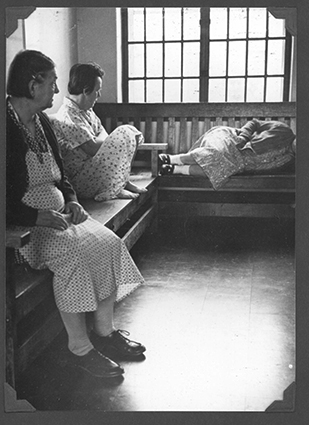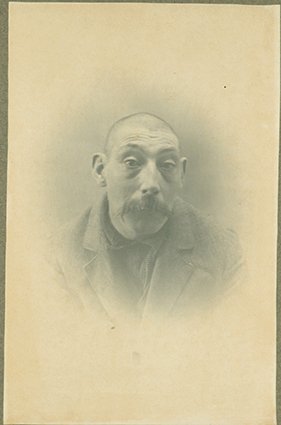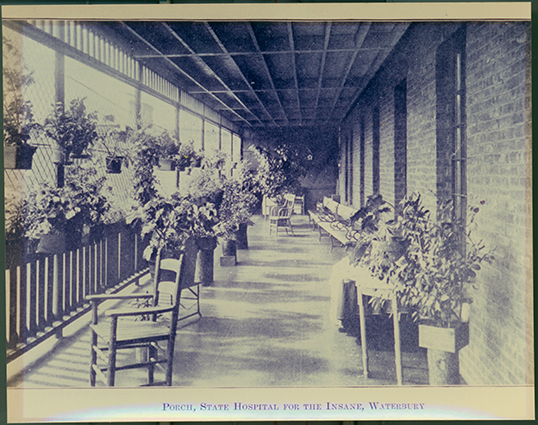
Moving From Institutions to Communities
Overview
The lesson introduces the social history of the development of institutions for individuals with disability in the United States. Video interviews and historical texts and photographs provide opportunities for students to learn about the impact of these programs and policies on the lives of individuals with disabilities. Research resources are provided. Teachers may want to help students consider what social policies that segregate people with disabilities have in common with institutions and practices that segregated other minority groups, including internment camps for Japanese Americans during World War II and Indian boarding schools that continued through the first half of the 20th century.
Civil Rights and Social Change Focus: Social Justice.
Grade Level: 7–12.
Subject(s): Language Arts, Social Studies.
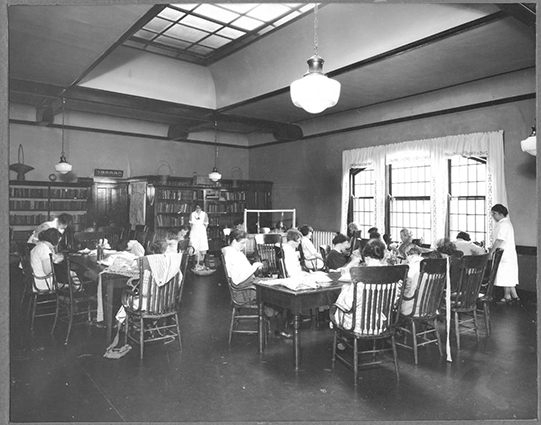
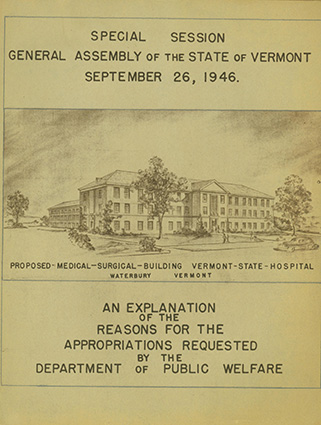
Learning Objectives
- Describe the origins and evolution of institutions for individuals with disabilities and the beliefs and practices behind their use.
- Compare and contrast the use of institutions for persons with disabilities to the use of institutions for other minorities and social groups.
- Recognize and analyze examples of bias and stereotyping in social responses to individuals with disabilities and to other minority groups.
- Read and analyze attitudes and responses to disability reflected in historical texts and images.
- Draw on current and historical sources and articulate a personal response to topics and ideas discussed.
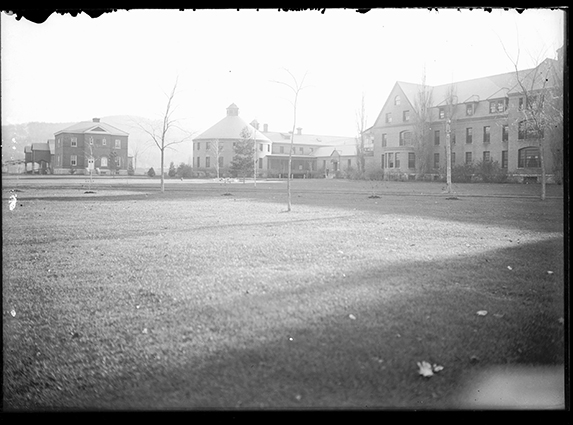
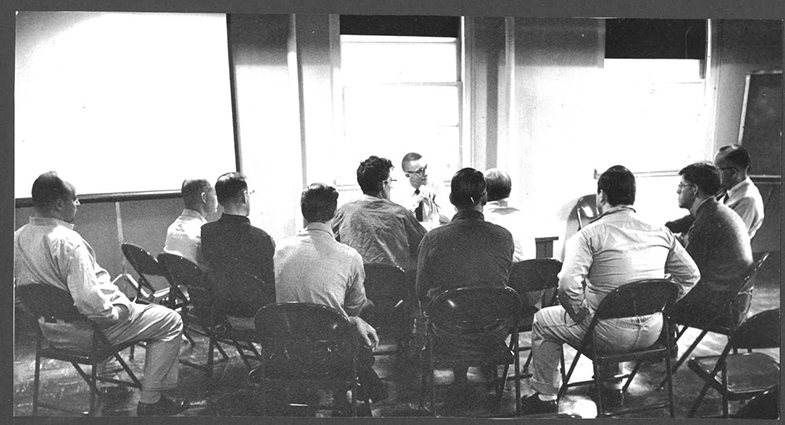
Standards
- Demonstrate independence in reading complex texts and in writing and speaking about them.
- Delineate and evaluate the argument and specific claims in a text, including the validity of the reasoning as well as the relevance and sufficiency of the evidence.
- Analyze how two or more texts address similar themes or topics in order to build knowledge or to compare the approaches the authors take.
- Read, write and speak grounded in evidence.
- Integrate and evaluate content presented in diverse formats and media and explain how it contributes to a topic, text or issue under study.
Time: Two to three class sessions, depending on activities selected.
Setting: Large group discussion with individual or small group research and writing activities, as assigned.
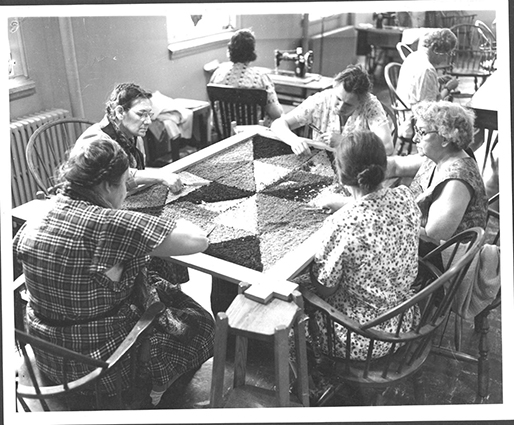
Materials
- Discussion exercises, A Home for the Spirit and Learning from Our Dreams and Nightmares.
- Life Histories at Center on Disability and Community Inclusion at the University of Vermont.
- Background information — summaries and historical documents for use by teacher and older students.
- Reading/film log or other paper for notes.
- Materials for creating artwork from Dreams and Nightmares exercise.
- Historical videos, images, texts and new resources (see Resources).
Preparation
Review activities and select the activities and resources to use with your course of study, schedule and grade level. Schedule multimedia equipment or computer lab as necessary for viewing CDCI Life Histories or other films about institutions (suggestions provided at end of lesson).
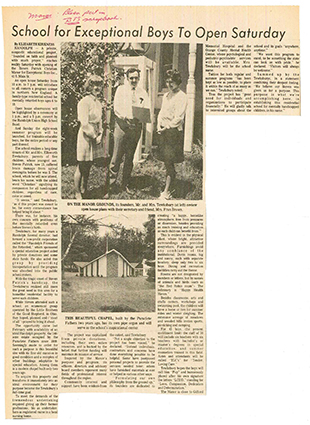
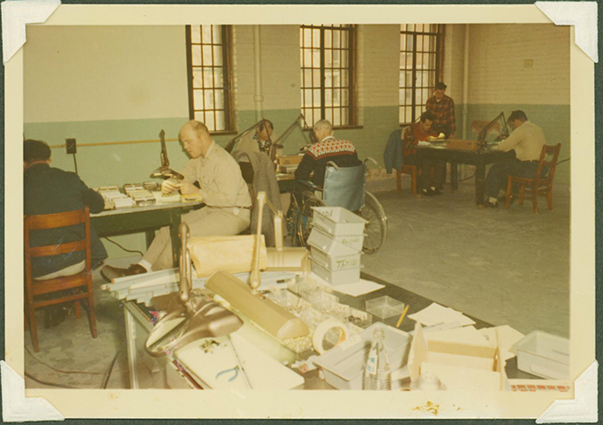
Directions
Introductory Activities: Students may or may not have previous knowledge of institutions like the Vermont State Hospital, Brandon Training School, or hospitals, institutions or residential schools for individuals with specific disabilities. Before going into the history it is important to give students an opportunity to consider the human and personal implications and what it feels like to have to leave home and go to an institutional setting away from friends and families and the community you live in. The “Finding Home” and “Which Door: Learning from Our Dreams and Nightmares” activities are intended to help people identify the things that make a place a home, even a nontraditional one. These exercises also help the class identify the characteristics they want to see included in community services, something that was often overlooked during the long history and practice of institutionalizing people with disabilities and others.
Historical material and references in this lesson include outdated and unacceptable words and phrases to describe individuals with disabilities. One purpose of this lesson is to discuss the attitudes and beliefs expressed in some of these terms but not to endorse their use today. Before beginning the historical readings, remind students to use more respectful language in their own conversations.
Historical Overview and Discussion: “Historical Overview — Institutions and Public Policy” and “Vermont Institutions” provide some background teachers can use to highlight the origins, beliefs and social factors influencing this country’s response to disability, the move from poor farms to asylums, training schools, and institutions and the more recent shift toward disability rights and inclusion. A list of other resources is provided at the end of this lesson.
Life Histories: Visit the Life Histories pages at the Center on Disability and Community Inclusion at UVM. Several of the stories told are by people who attended Vermont residential schools and other institutions: Pat describes his experiences growing up Deaf and going to Austine School for the Deaf. Christine, Don and Herman describe their experiences with Brandon Training School. Don also spent some time living at the Vermont State Hospital. Don, Christine and Pat’s stories are videos. Herman’s is a combination of text and video clips.
Have students watch or read selected Life Histories individually, in small groups, or as a class, and take notes. Once the films are over, come together to discuss what they learned from the interview. Here are some possible discussion questions following each video:
What do you learn about the person?
What was his or her life like before being sent to the institution? What does this person remember about life there?
What key events and experiences happened after he or she left the institution? What challenges did each person face? What opportunities?
What skills and abilities does the person have and how have they worked or contributed to community life?
What new information or ideas have you gained from this person sharing his or her story?
What thoughts do you have after watching all three interviews? Was there anything that surprised you?
What are your thoughts on institutions after hearing this person’s story?
Students may identify positive and/or negative experiences in each narrative. For example:
- Don did not have many good memories of either Brandon Training School or the Vermont State Hospital. Though he was not considered able to care for himself, he actually held jobs and helped care for his father.
- Austine School for the Deaf introduced Patrick to American Sign Language, giving him a way to communicate with others and a sense of shared community. At the same time, he also shared how hard it was for him during his first day at Austine, when his parents left and had no way to tell him that they would be coming back to see him.
- Christine went into Brandon when jobs were not available in the community. She provided care to younger children while at Brandon and went on to care for elders in Vermont nursing homes.
Some ideas to consider: Patrick’s memory of fearing that he would never see his parents was a common experience when children went to institutions. Parents often lacked a way to communicate with individuals who were Deaf or those with significant intellectual disabilities. These children were often left with no knowledge of whether they would see their home and family members again. During some historical periods, parents were told it was better not to visit or communicate with their child. Ask students for their response to this practice. Today a broad range of rights protections, services and accommodations are available to help both families and individuals with disabilities. We understand and accommodate and respect human difference more than we did in the past; but young people with disabilities often have to challenge stereotypes and advocate for respect and inclusion.
Analysis of Historical and Present Texts: The documents provided with this lesson include historical materials on institutions and a Vermont news article on the closing of Brandon Training School, Vermont’s institution for individuals with intellectual disabilities. Review selected documents with students and ask them to identify the author’s point of view and the cultural attitude about disability reflected in the text: How have attitudes and language use changed? What negative responses to disability can still be found in our language and ideas about disability?
Closing Activity
Have students discuss and/or write a journal entry or essay comparing the historical narratives and stories from this lesson with a contemporary narrative, video, or other commentary by an advocate with intellectual, mental health or other disabilities. How do people with disabilities see themselves today? How have our social beliefs and expectations changed? What change is still needed?
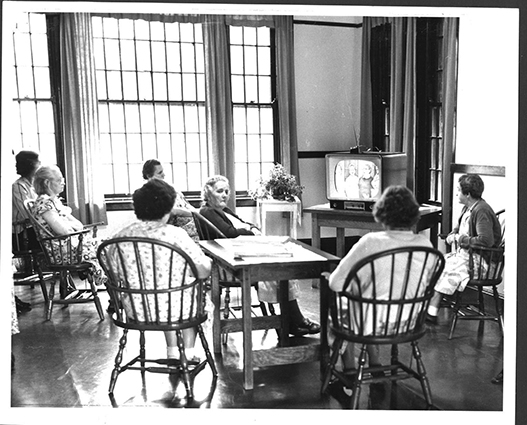
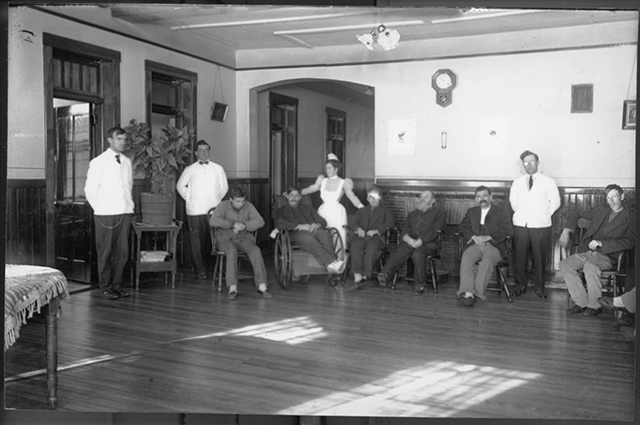
Resources
General Resources
The Disability History Museum’s website includes a broad collection of historical images and texts about disability experiences in different times, including a collection of primary source material about institutions. See them at the Disability History Museum.
“EveryBody: An Artifact History of Disability in America” is a virtual exhibit sponsored by the National Museum of American History. The collection tells the history of disability in America through objects and images that place the history of institutions in a broader historical canvas and can be found at EveryBody: An Artifact History of Disability in America.
Vermont institutions are included in the Asylum Project, an international registry of historical information on institutions. Go to asylumprojects.org.
A separate background summary, “Vermont Institutions: History and Resources,” is included with this lesson. In addition, we have included several historical texts about institutions from Vermont and other states. Others are available in state and national archives and Internet-based collections. In addition to historical resources, the list includes some suggested videos about inclusion and self-advocacy today.
Information Relating to the History of Disability Institutions:
(Note: Vermont-specific resources are included on a separate summary included with this lesson.)
Developmental and Intellectual Disabilities
“Parallels in Time: A History of Developmental Disabilities” uses text and images to present changing social responses to people with intellectual disabilities. One section, Chapter 7, “1800–1950: The Rise of the Institutions” describes the evolution of institutional models. See it at Parallels In Time: A History of Developmental Disabilities.
Mental Health
Pat Deegan has developed a powerful series of lectures on the history of the treatment of people with mental health conditions. Her lectures are available at Pat Deegan lectures.
Residential Schools for Individuals who are Deaf or Blind “Through Deaf Eyes”, National Public Television’s documentary history of Deaf experience in the United States, highlights changing viewpoints on Deaf experience and the best way to educate Deaf and hard of hearing children. The film is available online along with a full transcript, short videos by Deaf artists, excellent resource links and other supplemental resources PBS film “Through Deaf Eyes”.
Perkins School for the Blind, the first such school in the United States, has a history museum, which highlights historical events and milestones, including a short history of the development of Braille and other written language for individuals without sight. The website address is http://www.perkinsmuseum.org. They also sponsor a website on accessible science curriculum, a good way to show new approaches to educating and involving children with vision loss in science activities http://www.perkinselearning.org/accessible-science.
Books and Films on Institutions
“Lost in Laconia,” a documentary on the history of New Hampshire’s Laconia State School, is a difficult film to watch but provides a compelling presentation of the history and evolution of institutions, using historical material from the Laconia State School to present the movement from poor farms to institutions, the rise and fall of the eugenics movement and successful advocacy for community-based alternatives.
Related resources include the book “Christmas in Purgatory” (1974) available online at the Disability History Museum. To access it, go to “Christmas in Purgatory”.
Geraldo Rivera’s documentary, “Willowbrook: The Last Disgrace” (1972) shows how a few advocates and a reporter helped change public policy.
The more recent, and very moving, 14-minute film, “From Numbers to Names, State Hospital Cemetery Restoration,” documents what a small group of advocates did to restore the graves, and remember the lives, of residents at the former Danvers’s State Hospital in Massachusetts. “From Numbers to Names” can be found on YouTube at Grave Restoration Project. This work is part of a growing national campaign to reclaim cemeteries at state institutions.
Native American Experiences of Institutions and Eugenics
Joseph Bruchac’s “Hidden Roots” is a powerful novel for middle school students about the eugenics movement in Vermont. The story is told by a boy whose family learned to hide their Abenaki ancestry and heritage because of what happened to his grandparents during the 1930’s, when eugenics beliefs and sterilization of both Native Americans and people with disabilities was legal in Vermont.
Teachers and students may be interested in comparing Arnell Tailfeather’s YouTube “Indian Residential Schools Student Documentary” with the videos and films from former residents of Brandon Training School. What experiences do they have in common and what experiences are unique to disability or Indian experience? The documentary is at: http://www.youtube.com/IndianResidentialSchool
Teacher Resources
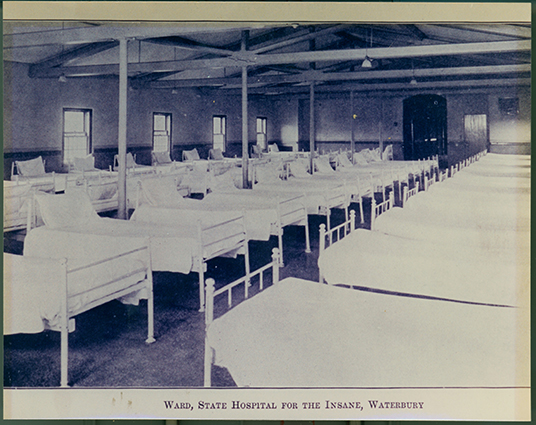
Student Resources
